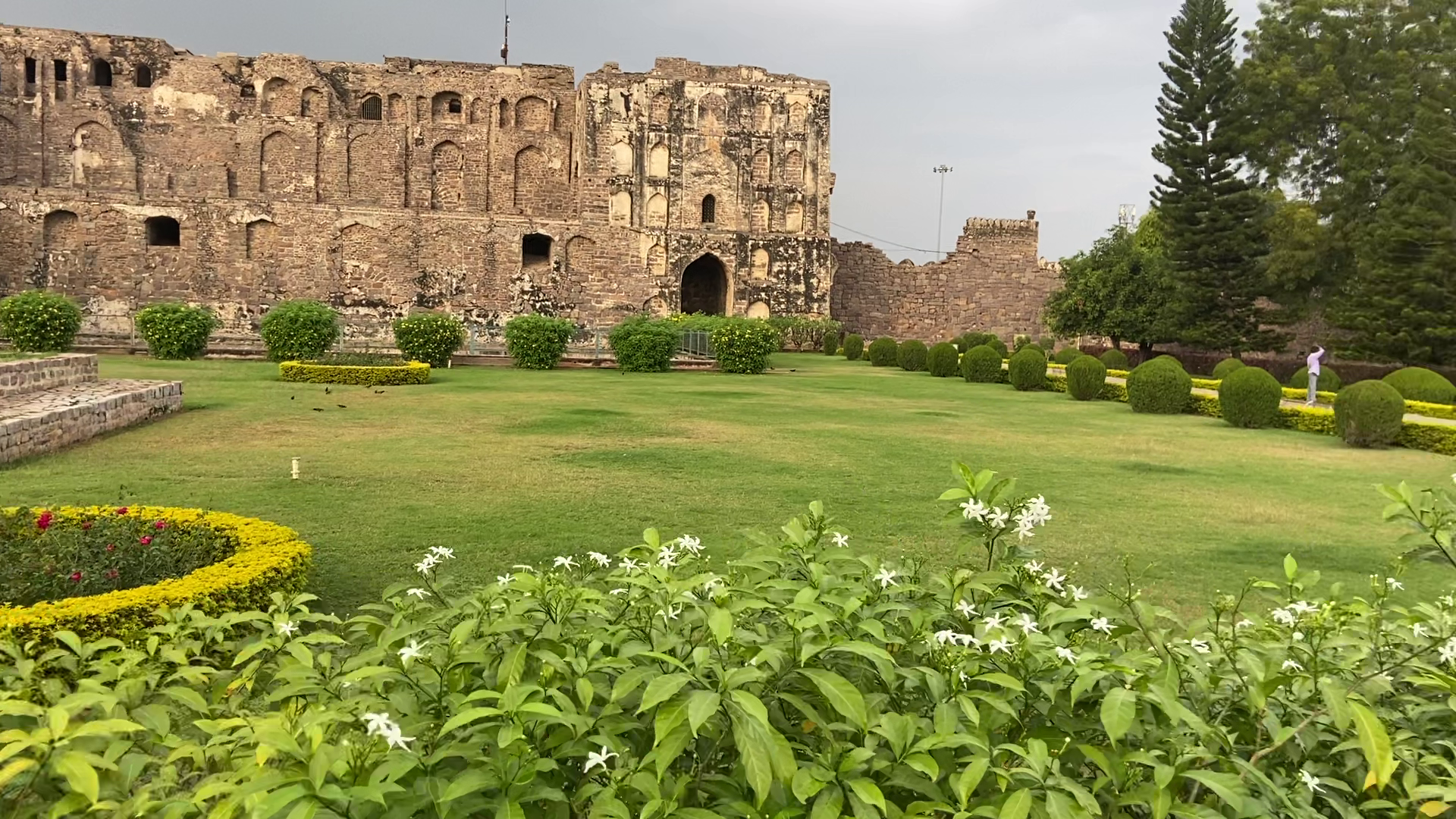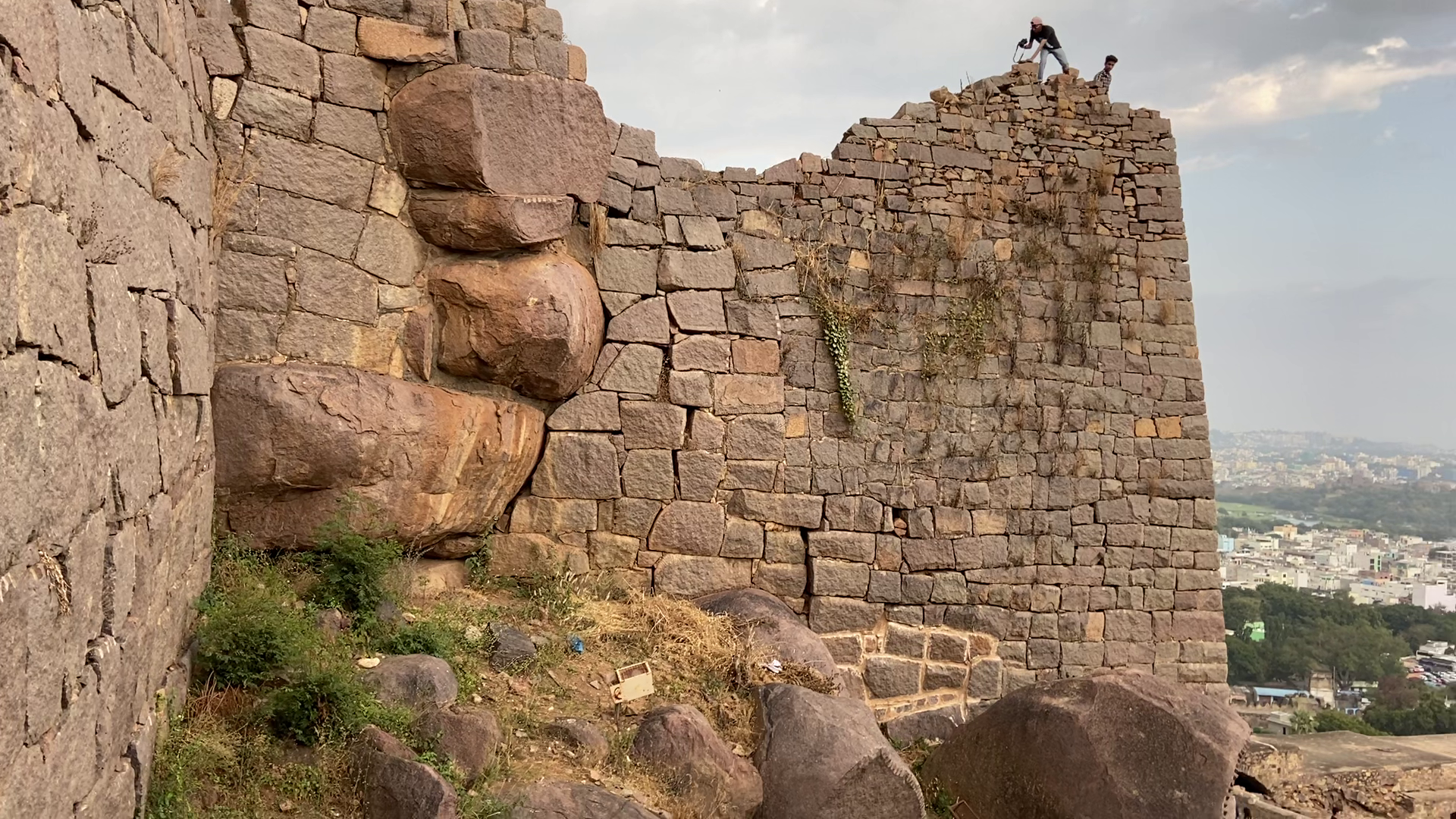Golkonda Fort Hyderabad | History |Story Related To The Place
Golconda Fort Hyderabad is an outstanding example of dazzling engineering and extraordinary architecture. Located at a distance of 11km from the city. The name of the fort has been derived from the Telugu words “Golla” and “Konda” which together means ‘Shepherd’s Hill’. Golconda fort timings are from 9 am to 5.30 pm. After that, visitors are not allowed to enter the fort, unless they are going for the light and sound show at night.
Because of the propinquity of diamond mines, especially Kollur Mine, Golconda thrived as a trade centre of large diamonds, known as the Golconda Diamonds. The region has produced some of the world’s most famous diamonds, Many famed diamonds are believed to have been excavated from the mines of Golconda (Kollur Mine), such as: Daria-i-Noor, Noor-ul-Ain, Koh-i-Noor,Hope Diamond, Princie Diamond, Regent Diamond, Wittelsbach-Graff Diamond, and many more.

Several dynasties ruled Golconda over years, they are Kakatiya Kings, Kamma Nayakas, Bahamani Sultans, Qutb Shahi dynasty, Mughal Empire.
History of Golkonda Fort:
The fort was constructed on a hill which was once the territory of the kakatiya king of Warangal in 1143 A.D. During the reign of Raja Pratap Rudra Dev, a shepherd suggested to him the desirability of constructing a fort on this hill the Raja welcomed this idea and constructed a fort of mud on a granite hill. This is the very reason why the fort could not withstand the invasion.
By 1363 A.D. it was attacked by Mohammed shah of Bahmani dynasty, and the fort was named as Mohammad Nagar, and hence the fort kept changing hands, i.e., from the Kakatiyas to Munusuri Nayaks, and then to Bahamani Sultans. The fort was then taken over by Qutb Shahi dynasty that built the structure into the granite fort that we see today. The fort then eventually fell into the hands of the Mughals.

As a result of instability of the kingdom these five Govrnors became independent:
- Khasim Buried in Bidar of burred shahi dynasty (1492 to 1609 A.D.)
- Fatheulla -Imadul Mulk in Berar of Imad Shahi dynasty (1490 to 1527 A.D.)
- Ahmed Nizamul in Ahmadnagar of Nizam Shahi dynasty (1490 to 1663 A.D.)
- Yousuf Adil Shah in Bijapur of Adil Shahi dynasty (1490 to 1686)
- Sultan Quil in Golconda of Qutub Shahi dynasty (1518 to 1687)
Seventh King of the Qutub Shahi dynasty ruled over Golconda from 1518 to 1687 A.D. of this, the first three kings of Qutub Shah dynasty constructed the Golconda fort in a period of 62 years from 1518 to 1580 A.D. And constructed the palace and other buildings, it is in the year 1587 that the fourth king Mohammed Quli Qutub Shah laid a city, bhag Nagar, after the name of his beloved concubine Bhagmati. It is the city which is now named as Hyderabad.
History of Koh-E-noor Diamond:
The Koh-e-Noor diamond was found during the time of Sultan Abdullah Qutub Shah at a place called Kollor ear river Krishna, Mohammed Sayeed meer jumla who joined Mughals as rebel in 1656 A.D. presented shah -e- Jahan Emperor, the diamond and also many other diamonds as a present it was in the treasure chest of the Mughals, during the time of Mohammed shah 1739 A.D. when there was a massacre in Delhi by Nadir Shah, the later took it to Iran (Persia). The koh-e-Noor Diamond (Mountain light) came under the possession by Shah Shuja Pishawari from there it travelled to Punjab in 1649 to Maharaja Ranjit Singh, then Dilip Singh the son of Ranjeet Singh gave this diamond to Queen Victoria and it is still canopied in the crown of the King of England, it is said that this diamond weight is 360 carat.

The Layout of Golconda Fort:
The rampart of Golconda is very strong and high, constructed with stones, it is about five miles in circumference. The fort comprises of nine doors 52 windows and 48 tunnels. There are cannons on each turret. There is a pacca ranch round about this rampart constructed inside and to the south-east, there is another trench with a turret at some distance.
The Fort Is Famous For Its Acoustic Effect:
If you clap your hand within the gate of Bala Hisar standing opposite to the steps, under the middle arch will here a vibration of sound, which starts from the highest portion of the Bala Hisar. The fort is famous for its acoustic effects, which was an effective security measure during those days. It is said that the sound of clapping of hands at Fateh Darwaza can be heard clearly at ‘Bala Hissar’, the highest point situated about 1 km away in Golconda Fort.
Hatyan Tree:
This is a very peculiar tree within the new fort of the east of Mulla Khiafi mosque. The tree is more than 800 years old, the circumference of the trunk of this tree is 85 feet. The trunk looks like a stone, the inner portion is hollow. The furnished portion inside is at least 36 sq feet while the eight inside is nothing less than 15 feet, there is a ventilator, the ree could be seen always flourishing and fructifying.

The Gates of Golconda Fort:
There are nine gates or door ways all the names are listed below:
- Fathe Darwaza
- Moti Darwaza
- Darwaza of the new fort
- Jamali Darwaza
- Banjari Darwaza double
- Patancheru Darwaza
- Makkai Darwaza-double
- Bodli Darwaza
- Bahmani Darwaza
Fateh Darwaza:
This double gate is situated to the east of the fort, during the period 1687 A.D. Abdullah Khan Panni has opened this gate through which the army of Aurangzeb could have an entry.
The turrets of the fort:
In all there are 87 turrets and pails. Through the circumstances of five miles of the rampart there are 48 terraces of which
- Patla Burj
- Mosa Burj
- Majnoo Burj
are very famous.
Petla Burj:
This is situated at the Northwest of the fort in a corner on which these cannons, Fathe Reebar commemorating the victory of Alamgir is 16 feet long which is used to be loaded with a cast iron balls weighing one around 261/2 ibs of gun powder. It is very beautiful.
Mosa Burj:
This is situated at the south of the fort, this was constructed in 1666 A.D. under the supervision of Moosa Khan, it is on this turret that meet meeran the famous general was killed, Moosa khan was appointed general in his place, The alamgir cannols azdaha appointed paiker. The turret is having a big serpent. The cannon was also being placed there.
Majnoon Burj:
This burj turret is situated with the hillock and there is an lamgir Majnoon cannon on it.
The Quilakush Tope:
It is situated on the Bala Hisar on the west.
Shamshir kotha:
This is a store house of arma and ammunition of olden era.
The Royal treasury:
Qutub Shahi treasury used to keep in this building.
Hathi Rath:
It is rath or chariot which was kept in this building and taken out in the procession on the occasion of jatras (Relicious festivals) drawn by elephants
Katora houze:
This is cistern (reservoir) in the fort of the month of the bala hisar, it is 200 yards long, having the same breadth with a depth of 5 yards. This cistern was being filled in from the waters of Drug tank and the kings and others used to enjoy a boating excursion in it.
The oil store house:
This was a building filled with oil, this was carved in a single stone measuring 30*15*10 it could contian 12,000 gallons of oil and oil was being supplied to this store house.

Masjid mustafa khan:
It is the Mosque built by Mustafa khan, the minister of Ibrahim Quil Qutub Shah.
The dhaan kotha or the Godown of the grains:
It was a place where grains used to be stored, the godown was being filled during the time of war so that there was no need of importing supplies of food.
Jama-E-Masjid and the hamam (Bath):
This mosque is situated within the fort opposite of the gate of Bala Hisar to the eastern side, founder of this Mosque was the sultan Qutub Shah, who started its construction in 1518 A.D. There is a historical inscription on the gate of this Mosque in arabic language.
Masjid-E-Shahi Aashur Khana:
This building is situated opposite to the bala Hisar, towards east, its founder being Qutub Shah.
Bala Hisar:
Bala Hisar is on the hills its circumference is about 11/2 miles, there are several buildings here, such as Qutub Shahi palace, Durbar-e-Aam general assembly Burbar-e-Khas (Special assembly) Diwane-e-Aam,, Diwan-e-Khas where special meeting being held, wells ammunition storage armoury mosque, temple, the prison where Ramdas was jailed, water reservoir. Julu khan bath and a park and the cistern over the roof and the stock room of arm communication armoury. There is two passage leading to the Bala Hisar one of Darbar-e-Aam, the passage leading to the Bla Hisar one of the Darbar-e-Aam, right-hand side and the other of Royal place to the left.
Curtain wall:
Opposite to the gate of the Bala Hisar, there is a curtain wall in times of war the movements of the enemy were observed and checked from behind this wall.
The Gate Bala Hisar:
There used to be a garrison of force even on the roof of the gate of bala Hisar behind the turret during the war the army getting into the premises of curtain wall of the bala hisar could be seen and checked.
The Pouring of hot oil or Lead:
There is a hole in the middle of the other portion of the arch of the gate of bala hisar in the event of the enemy waiting for his elephants to dash against the gate, the hot oil or melted lead used to be poured on them.
The Bath of Qutub shahi:
The way leading to the right side on entering the gateway of Bala hisar, you will find a bathing pool, within the gate just to the right-hand side of the Nagina Bagh (Nagina garden) where there are pucca cistern to hot water and cold water, there are earthen tank, water being heated by special means, and hence hot water was being supplied for the bath of the royal family.
Nagina Garden:
It is in this garden that in the war waged by Aurangzeb in 1687 A.D. Abdul Razaak and his horse were badly wounded and fait down unconscious. When Abdullah Khan Panni by treachery had opened the gate of the fort to the south of this garden, there used to be big swimming pool under arches strongly built, in which the princes and princess used to enjoy swimming.
So apart from all these, there are much more to explore, even the DURGA DEVI TEMPLE and Mother KAALI temple is the main attraction of this place. One can even

Entry Fee and Timings:
The entry fee is Rs. 25 per persion, and it remains open from 9am to 5:30 Pm. It is open on all days of the week.
Sound And Light show:
It shows the history and story related to the fort, the timings of sound and light show at Golconda Fort are from 6 pm to 9.15 pm, depending on which month you are planning to visit. It is closed on Mondays. The Sound and light show is one of the major attractions of the Golconda Fort. Organised at the area in and around Rani Mahal, Alluring its viewers everyday in three different languages, English Telugu and Hindi.
Best time to vist Golkonda fort is from September to march, as Hyderabad becomes very hot during the summer session hence it is hard to explore much.


Leave a comment